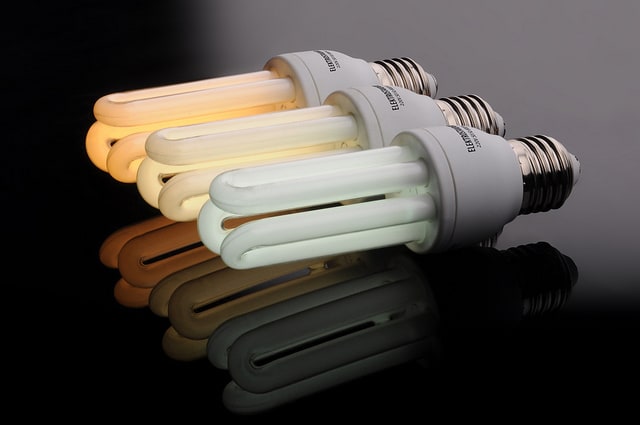Energy efficiency simply means “using less energy to provide the same service”. Energy efficiency isn’t always about how little energy you can use, it can be about creating a balance between energy demand and energy supply. It aims at managing and restraining the growth in energy consumption. There are many new techniques and practices available that promote self-sustaining energy creation on sites to counterbalance energy requirements of a facility that will make the energy efficiency ratio of a building much greater than a site that doesn’t use as much energy, but also doesn’t have a way to generate its own.
According to IEA (International Energy Agency),
“Energy efficiency is a way of managing and restraining the growth in energy consumption. Something is more energy efficient if it delivers more services for the same energy input, or the same services for less energy input.”
For e.g. CFL bulbs use one-third or one-fifth the energy of incandescent lights and may also last 6 to 10 months longer, a single pane window when replaced by a energy efficient window, prevents heat from escaping in the winter. During summer season, the same window keeps the heat outside and you don’t have to run your air conditioner that often.
Similarly, when an old electric appliance is replaced by a new energy efficient model, it provides the same service but uses less energy. Insulating a home or office can reduce the amount of heating or cooling necessary to maintain a comfortable temperature.
Energy efficiency is one the easiest way to reduce the amount of energy that we need to run appliances or gadgets. It helps to reduce greenhouse gases, combat climate change and reduce energy cost for consumers as well as corporates. According to the International Energy Agency, improved energy efficiency in buildings, industrial processes and transportation could reduce the world’s energy needs in 2050 by one third, and help control global emissions of greenhouse gases.
What is Energy Efficiency Ratio?
An energy efficiency ratio is the ratio of the cooling capacity of an air conditioner measured in British Thermal Units (BTU) per hour to the total electrical input measured in watts. Air conditioners having high EER are considered to be most cost effective. For room air conditioners, it is called energy efficiency ratio or EER. For central air conditioners, it is called seasonal energy efficiency ratio or SEER.
For instance, if a 10,000 BTU air conditioner consumes 2000 watts, then the EER of air conditioner is 10,000/2000 = 5. AC’s with high EER consume less power but come with a higher price tag. The higher the ratio, the less the unit will cost to operate.
What is Energy Efficient Lighting?
Energy efficient lighting is lighting that utilizes low energy bulb design, placement and architectural engineering to reduce the need for energy for illumination in a building or community. Lighting engineers look at 3 things when they are planning energy efficient lighting :–
- How much illumination is needed (in lumens)?
- How much illumination exists in the location?
- How can illumination be introduced so that it creates the least drain on the energy grid?
One example of how energy efficient lighting is planned is to look at the use of low energy CFL bulbs as a choice to light a public hallway. CFL bulbs are long lasting, low energy bulbs that can provide illumination that equals that of traditional light bulbs. A lighting engineer isn’t just going to make a call out to replace the same number of normal bulbs with CFL ones, they are also going to look at how much light is needed- and what illumination can already exist in the location.
If you are looking at a public hallway, even with lights placed every six feet, the result may be too dim to allow for safe vision. To increase the amount of illumination in the hall, the answer may not be to use more bulbs, but to introduce skylights and solar tubes. Engineers may also work with material designers to choose lighter and more light reflective materials for the hallway design as well.
What is the Real Cost of Energy Efficiency?
While much is made of the high cost of low energy bulbs they are more cost effective in the long run. The bulbs last almost 10 times longer than traditional bulbs and use 50% or less electricity. This creates an overall savings that has to be read in terms of the lifespan of the bulb. The problem is that many people only look at the initial cost, not the total life cost of providing light. That same is true when you incorporate other aspects of energy efficiency – installing different types of insulation or using different energy efficient materials can be more expensive at first, but the total cost of savings over the lifespan of the building makes it much less expensive than normal materials.
Understanding zero energy balance designs
Zero energy balance design buildings are the latest in providing energy efficiency. These are buildings that may incorporate ways to harvest their own energy – from solar panels to geothermal heating sources to “zero-out” their energy requirements. The extra energy they gather can be returned to the grid to help during times of heavy community load. If the building cannot harvest enough for its own use, it can draw from the established grid – but the replacement power it provides when the harvest is in excess of its needs creates the zero energy balance of the design’s name.






